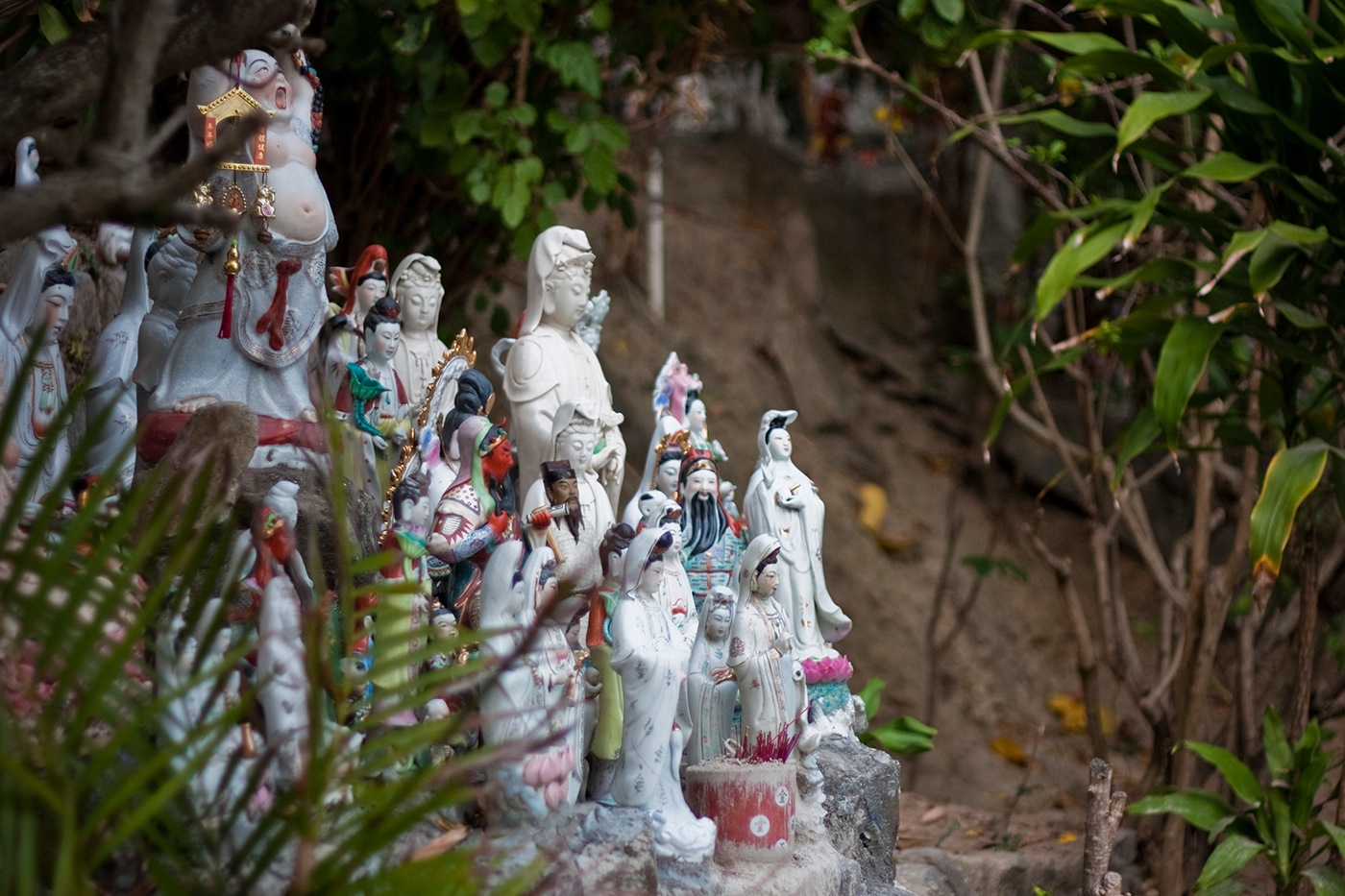Hong Kong Transportation: How to Get around Hong Kong
How to travel in Hong Kong after your arrival there? Convenient and handy Hong Kong public transport can take you to any place there. Follow us to know how to get from airport to Hong Kong city downtown, from city center to nearby islands, etc. by including MTR system, ferries, public buses, trams, taxis, and so forth.
Hong Kong Airport to City
Hong Kong International Airport is about 34 kilometers from Hong Kong downtown. After your landing, MTR Airport Express Line, Airport Express buses, and taxis can be easily found.
By Airport Express (MTR)
MTR Airport Express Line takes you directly from Airport stop to reach Hong Kong Station at Central area for only about 50 minutes, which usually costs HKD115 by single ticket and HKD110 by Octopus Card. Besides, it stops at Kowloon Station in the middle way and needs about 40 minutes from the airport, and costs HKD100 by Octopus Card and HKD105 by single ticket. Usually, the train arrives every 10-12 minutes.
By Airport Express (Bus)
There are some airport buses running between Hong Kong Airport and Hong Kong city area. Among all the bus, H1, H2, H3 and H4 serve for passengers to and from Hong Kong Island, including Central, Wan Chai, Causeway Bay, etc. And K1, K2, K3, K4 and K5 shuttle to Kowloon area, so you can get on to arrive at Hung Hom, Jordan, Tsim Sha Tsui, Mong Kok, Yau Ma Tei, etc. those buses usually depart every 15-20 minutes during around 06:15-23:00.
By Taxi
Of course you can transfer by local taxis. It usually takes about 40-50 minutes and costs HKD200-300 accordingly.
Hong Kong MTR
MTR (Mass Transit Railway) is a fast, clean, efficient, modern and cheap network of underground. At present, there are 11 underground lines (Airport Express, Island Line, Kwun Tong Line, Tsuen Wan Line, Tung Chung Line, Tseung Kwan O Line, Disneyland Resort Line, East Railway Line, West Railway Line, Ma On Shan Line and South Island Line), and those lines can take you to various places at Kowloon area, New Territory and Hong Kong Island. MTR is very popular among locals and tourists. With a lot of clear signs in both Chinese and English and voice broadcast in Cantonese, Mandarin and English, it is very easy to take MTR during your trip in Hong Kong. Furthermore, MTR is relatively a cost-efficient way for traveling, and it usually takes about HKD4.5-50 for a single take according to your journey length. Using the Octopus Card or a tourist day pass, you will save a big amount of budget on transportation.
Hong Kong Light Rail
Light Rail is a part of Hong Kong MTR System, however, they mainly serve in New Territories, within Tuen Mun and Yuen Long districts. So far in 2019, there are 12 light rail lines, and West Rail Line run from Tuen Mun to Hung Hom, also reaches East Tsim Sha Tsui, Austin, Tin Sui Wai, etc. Also, this line is well connected for transfer to MTR East Rail Line, Tsuen Wan Line and Tung Chung Line.
Hong Kong Ferry
Once to be a fishing village, Hong Kong enjoys many waters and piers. So taking a ferry to visit Hong Kong would be a good idea. The Star Ferry is a top recommendation by Lonely Planet, on which you can appreciate the fascinating Victoria Harbor and modern buildings on both banks. Besides, it is a cheap and fast way to transfer between Hong Kong Island and Kowloon. The ferries depart nearly every 6-15 minutes during different period of day from early morning till late night, and the riding usually needs only about 8-9 minutes. There are two main routes going between Kowloon Peninsula and Hong Kong Island, in bothway, namely Central – Tsim Sha Tsui, and Wan Chai – Tsim Sha Tsui. Please check detailed ticket price and operating hours at below.
Hong Kong Bus & Minibus
Hong Kong buses are handy available everywhere in Kowloon, Hong Kong Island and New Territories in Hong Kong. Nearly all buses in city area are double-deck, and well provide air conditioner. English, Cantonese and Mandarin are used for voice broadcast, and English and Chinese are displayed for next stop. Besides, final terminus of the route is displayed in front of the bus.
Minibus
Furthermore, there are many minibuses operating in Hong Kong. At present, there are minibuses in red and those in green. The green ones have fixed routes, schedules and fares, however, those red ones are not and can stop anywhere in different districts in Hong Kong, except the special forbidden area. Those buses are small and occupy no more than 19 passengers once. If there are no seats available, the driver won’t stop on the middle way unless there are passengers getting off the bus. They run very fast and stops are not very far. You won’t wait long if you missed one. Just tap your Octopus Card to get on the minibus. Cash is available for most minibus. However, some minibus drivers do not speak English but only Cantonese. Please pay attention to the voice broadcast in English, Mandarin and Cantonese for getting off at your destination.
Hong Kong Tram
The narrow double-decker city trams (in Cantonese called “ding ding”) trundling along the northern coast of Hong Kong Island are a Hong Kong icon. Operating since 1904, the tramways are well preserved to seek the old Hong Kong and also offer you a relaxing way to discover the historical streets on the island. Trams are slower and bumpier than other any modern transport and they are not air-conditioned. But the 6 routes spreading along Hong Kong Island’s center cover many places visitors would want to see. Those routes are Sheung Wan (Western Market) – Shau Kei Wan, Happy Valley – Shau Kei Wan, Shek Tung Tsui – North Point, Shek Tung Tsui – Causeway Bay, Kennedy Town – Happy Valley, and Kennedy Town – Shau Kei Wan, and all of them run both from west to east and vice versa. Trams run from 06:00-07:00 to 23:00-24:00 every day according to different routes. The tram fare costs only HKD2.6 per adult, HKD1.3 per child no more than 12 years old, and HKD1.2 per elder no less than 65 years old. Like most other buses, just tape your Octopus to get on.
Peak Tram
Opened in 1888, the peak tram is Hong Kong’s first mechanized mode of transport. It once served as the transportation for the wealthy and foreigners living on the mountain. The 1.7 km track up from Central to Victoria Peak is worth at least one trip, not only for your longing panorama of Hong Kong from the 428m high observation deck. The journey takes only seven minutes and is a visual experience to remember, as skyscrapers glide past at what appear to be impossible angles while the tram makes its ascent. The peak trams run 07:00 to midnight daily and take HKD52 for return trip and HKD37 for single trip each person. Check the detailed ticket prices at below.
Hong Kong Taxi
Taxis in Hong Kong are plentiful, clean and efficient, so you can take one to your destination conveniently and fast. There are three types of taxis in Hong Kong: red, green and blue. The Urban taxis (red) can travel anywhere within Hong Kong and also the most expensive. The meter starts at HK $24.00 for the first 2 kilometers, and a further HK $1.70 for every 200m and every 1 minutes waiting time thereafter. Lantau taxis (blue) operate only on Lantau Island (including the airport and Disneyland). It charges HK$19 for the first 2 kilometers and HK $1.5 for other every 200m and every 1 minutes waiting time. New Territories taxis (green) are confined to New Territories, the airport, Hong Kong Disneyland. For this kind of taxi, HK $20.5 is charged for the first 2 kilometers, and HK $1.5 is charged for extra 200 meters and every 1 minutes waiting time. It is very easy to hail a taxi along the street, besides some restricted zones. Despite the relatively higher costs, taking a taxi is really a good choice to get to anywhere you want in Hong Kong.
Discover by Walking
Hong Kong boasts a wide range of good places to visit and interesting historical and cultural sites, and also, many famous interesting buildings and places are not far. Walking is also a very good way to discover this city. Meanwhile, a lot of accommodation, restaurants, shops, stores, etc. are well linked with Hong Kong MTR, you can get so many fun and convenience just by walking.


